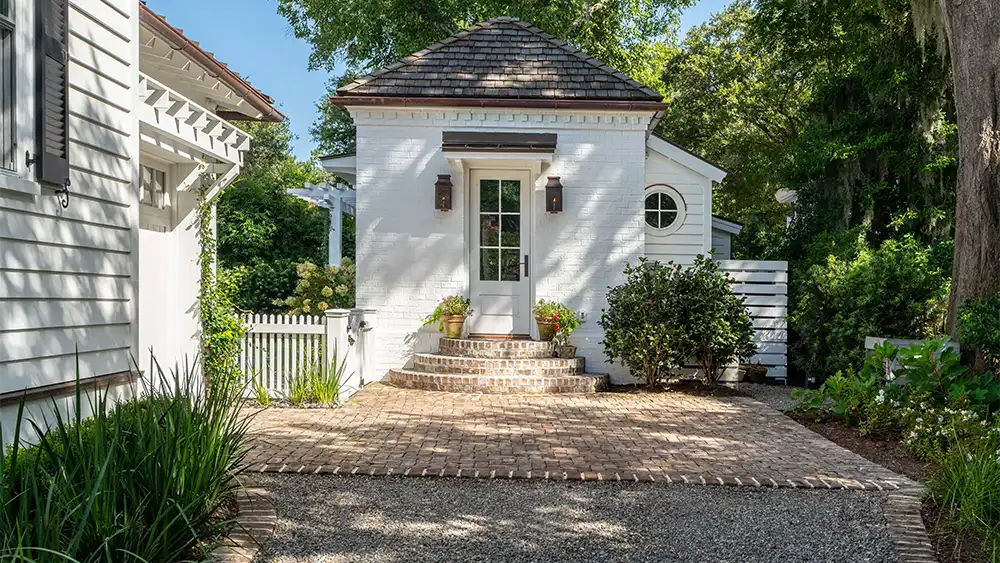
Since wealthy Egyptians first created formal gardens in 2,000 B.C.E., civilizations all over the world have taken pleasure in establishing dedicated outdoor spaces. These earliest gardens were laid out symmetrically and were also used to grow fresh produce. Later, after the Roman conquest of Britain in 43 B.C.E, ornamental gardens were established for the rich and powerful.
As few of these sites have ever been excavated, presumably the designs traveled with the Italians. They likely adapted the plans, which perhaps included a courtyard surrounded by statues, fountains, pools, plants and a dining space, for the British climate. During Europe’s medieval era, monks grew flowers and herbs within their cloisters’ walled courtyards. This ancient trend of shaping beautiful outdoor spaces has blossomed throughout the ages.
What makes a garden flourish in modern-day Mount Pleasant? For Adam Dukes, owner of GrandScapes, form, function and beauty are of equal importance when thinking about curating an outdoor space. “Plan ahead for how the space will be used, whether that’s relaxing, entertaining or a play area for children or pets,” suggested Dukes. “Then start browsing through pictures to generate ideas.”
Olga Morales, owner of Morales Paving, advised avoiding the DIY route when landscaping a garden. “It’s important to simplify the process by reaching out to a professional who will assess the scope of the project,” she said.
Dukes agreed, adding that although he loves working with clients at any stage of the process, working with a landscaper earlier rather than later is the best strategy when it comes to layout and positioning. “It’s our job to help clients achieve their vision and if necessary, make adjustments so their garden will flourish for years to come. Listening to what the client would like to see in their garden and learning what plants they like or don’t like is of utmost importance in the early stages of planning. Then given that information, we will determine what will work best in the space depending on sun, shade, drainage, humidity, salt tolerance, deer resistance and soil type.”
Morales continued, “When we look at a client’s vision, we can then give input as to how we will elevate their outdoor living space beyond their imagination. There may be components such as an elegant fireplace area, pergola or raised flower beds, outdoor lighting, brick pavers, planting flower beds or specific shrubs, trees or grass, that they hadn’t thought of incorporating.”
After the discovery phase comes the plant selection process and deciding on the best placements, according to Dukes. “Choosing foundational plants, such as boxwoods or an evergreen shrub like podocarpus that go well with the structure helps frame out the garden,” he explained. “Then we highlight the landscaping with pockets of color using flowering accents like lantana or plumbago.” He said other blooms to consider incorporating into the garden this time of year are azaleas, Confederate jasmine, loropetalum, redbud trees and hydrangeas.
To learn more about curating your own timelessly beautiful garden, visit GrandScapes at grandscapes.com and Morales Pavers at moralespaverschs.com.
By Sarah Rose




Leave a Reply